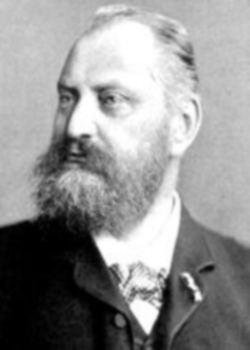Role Chemist Name Albert Niemann | ||
 | ||
Alma mater University of Gottingen Died January 19, 1861, Goslar, Germany | ||
Education University of Gottingen Doctoral advisor Friedrich Wohler | ||
Petar petljanski albert niemann
Albert Friedrich Emil Niemann (May 20, 1834 – January 19, 1861) was a German chemist. In 1859 - about the same time as Paolo Mantegazza - he isolated cocaine, and he published his finding in 1860.
Contents

Life
Niemann was born in Goslar, then in the Kingdom of Hanover, the son of a school principal. In 1849 he began an apprenticeship at the town hall pharmacy in Göttingen, where from 1852 he was a Ph.D. student at the George August University.
Cocaine
In the 19th century, there was a great interest among European chemists in the effects of coca leaves discovered in Latin America. In 1855 the chemist Friedrich Gaedcke had published a treatise on an extract of the coca leaf he called erythroxylin. However, little progress was made in extracting coca's active ingredients.
Friedrich Wöhler, Ordinary Professor of Chemistry at Göttingen University, had coca leaves imported to Germany by Karl von Scherzer, a member of the Austrian Novara expedition, and he gave those leaves to Niemann, his graduate student, to analyze. In 1859, Niemann isolated cocaine from coca leaves. He extracted the primary alkaloid and named the ingredient "cocaine"–as with other alkaloids its name carried the “-ine” suffix (from Latin -ina). He wrote of the alkaloid's “colourless transparent prisms” and said that, “Its solutions have an alkaline reaction, a bitter taste, promote the flow of saliva and leave a peculiar numbness, followed by a sense of cold when applied to the tongue.” He published his finding in 1860 in his dissertation titled Über eine neue organische Base in den Cocablättern (On a New Organic Base in the Coca Leaves). This dissertation earned him his Ph.D. and was published in 1860 in the journal Archiv der Pharmazie.
Sulfur mustard
During experiments with ethylene and sulfur dichloride, Niemann discovered bis(2-chloroethyl) sulfide which was later named sulfur mustard and used extensively as chemical warfare agent in World War I.
He describes the properties as: Sie besteht darin, daß selbst die geringste Spur, die zufallig auf irgend eine Stelle der Haut kommt, anfangs zwar keinen Schrnerz hervorruft, nach Verlauf einiger Stunden aber eine Rötung derselben bewirkt und bis zum folgenden Tage eine Brandblase hervorbringt, die sehr lange eitert und außerordentlich schwer heilt , unter Hinterlassung starker Narben. (They are represented by the fact that, even traces brought into contact with the skin, while painless at first, result in a reddening of the skin after several hours, and in the following days produce blisters which fester and heal slowly and with great difficulty, leaving behind significant scarring.)
Death
Niemann died on 19 January 1861 in his hometown Goslar, reportedly of "suppuration of the lung", probably caused by sulfur mustard poisoning. After his death, his colleague Wilhelm Lossen continued his investigations, and identified the chemical formula of cocaine in 1862.
